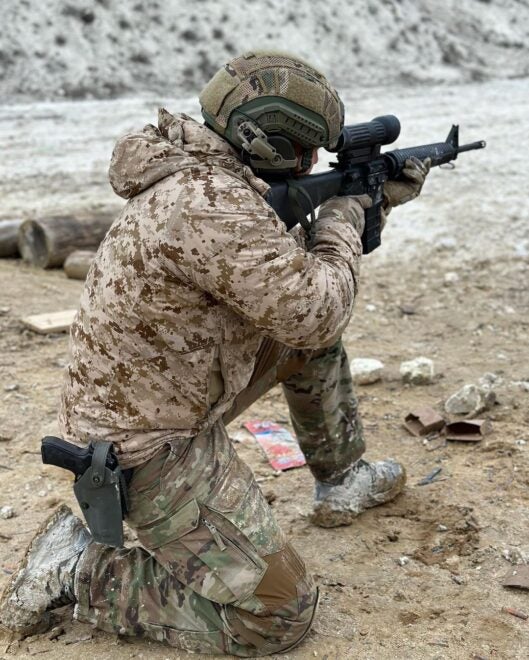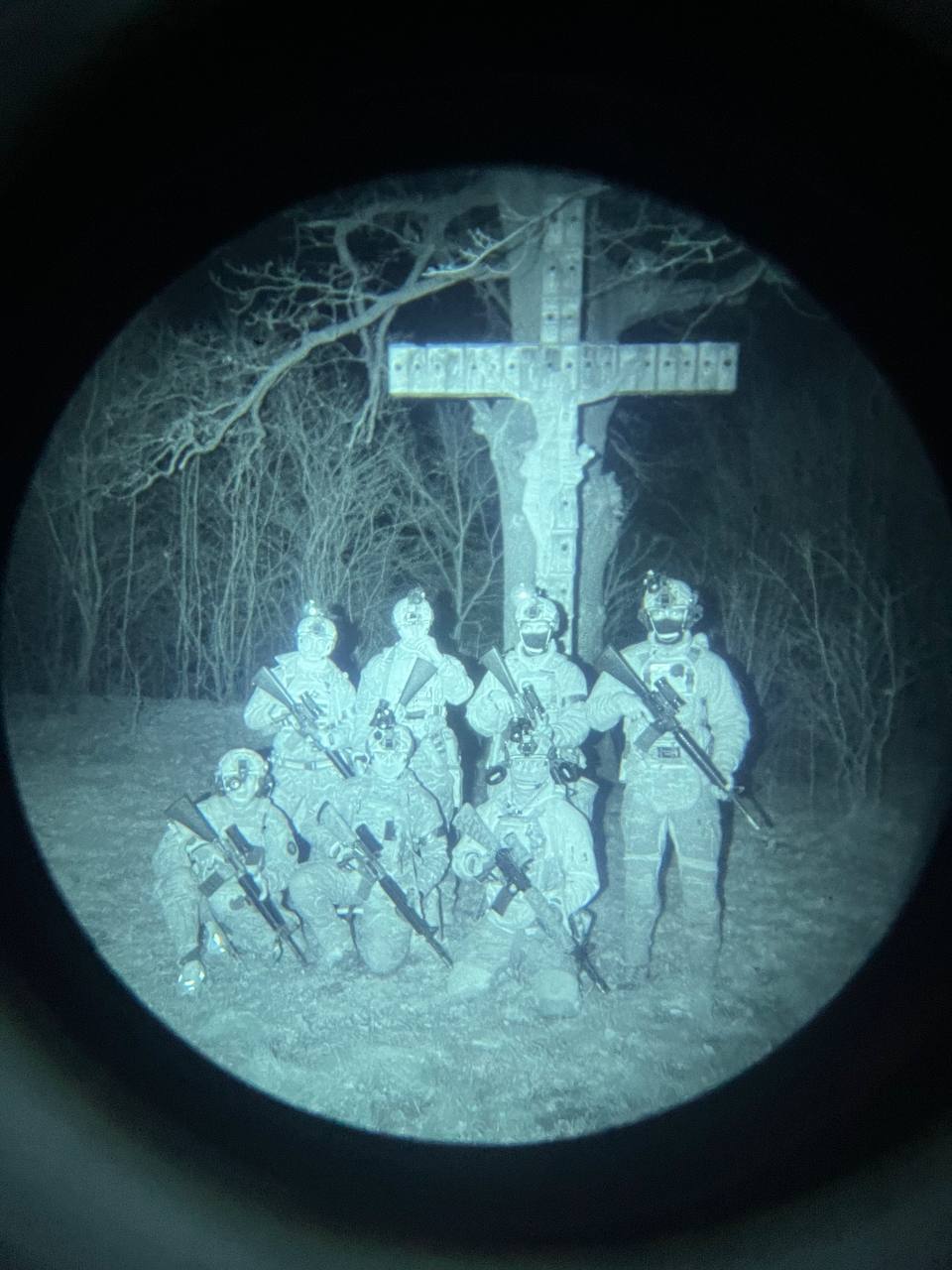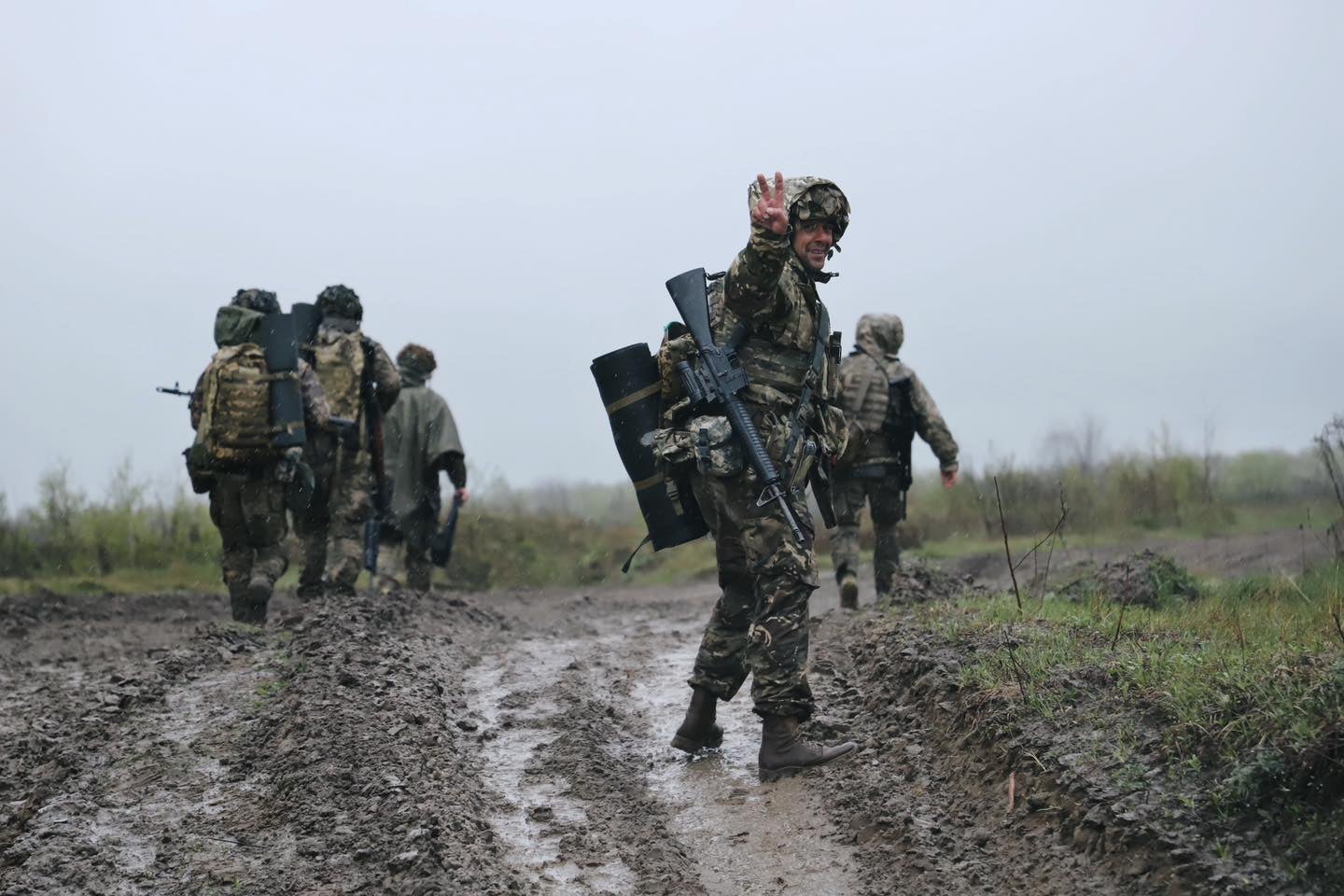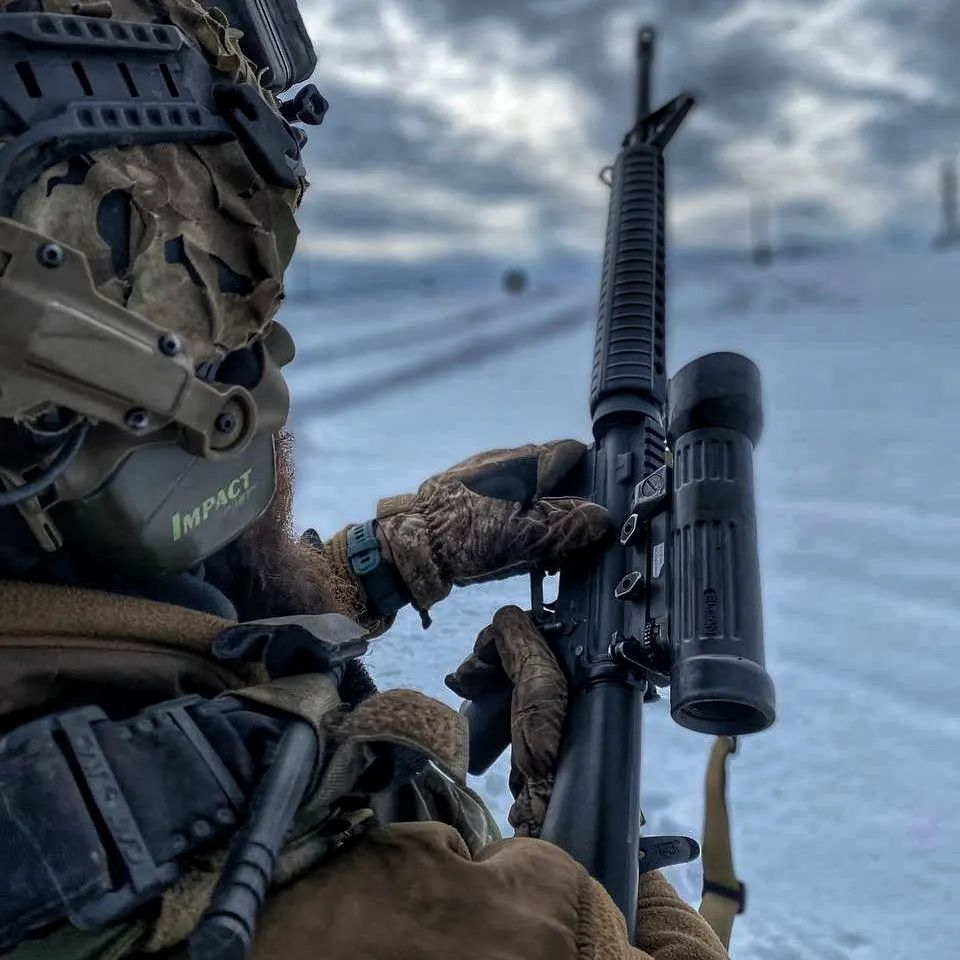Last year Diemaco/Colt Canada C7A1 rifles began to appear in Ukraine. Initially, these were thought to have originated from Canada. However, after speaking with numerous sources the rifles have been confirmed to have come from the Netherlands. I’ve spoken with Dutch colleagues and members of the Netherlands Armed Forces about the rifles and have been able to interview a source familiar with the Dutch operation to supply the rifles.
Russo-Ukrainian War Firearms @ TFB:
- M110 Semi-Automatic Sniper Systems in Ukraine
- Canada Announces 20,000 Rifles For Ukraine
- TsKIB SOO MTs-566 Turns Up In Ukraine
- Ukraine Receives M16A4s
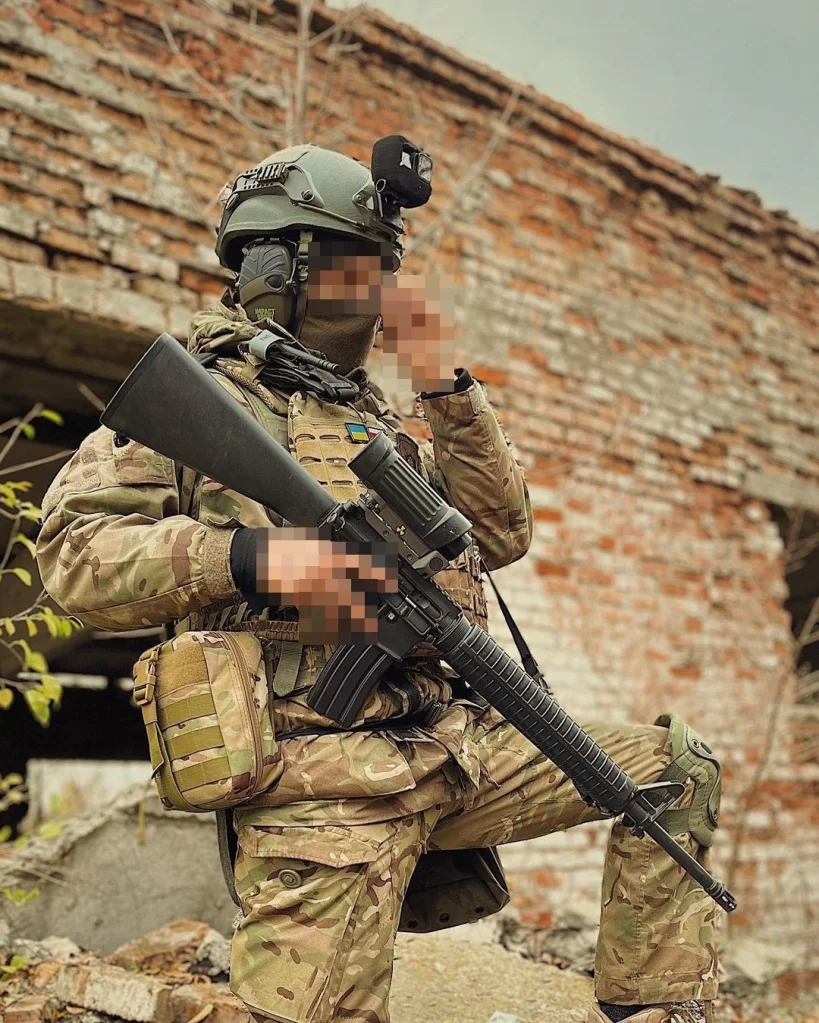
Ukrainian SOF operator with a Dutch C7A1 mounted with an ELCAN optic originally used on a simulator range (via social media)
In the summer of 2022, a small team of Dutch Army armourers worked feverishly to check and prepare thousands of surplus rifles for shipment to Ukraine. Since then the rifles have regularly been seen in the hands of numerous Ukrainian military units.
The Netherlands has provided a wide range of military aid to Ukraine since the outbreak of war ranging from Stinger MANPADS to YPR-765 APCs, and from 155mm PzH 2000s self-propelled howitzers to Barrett and Accuracy International precision rifles.
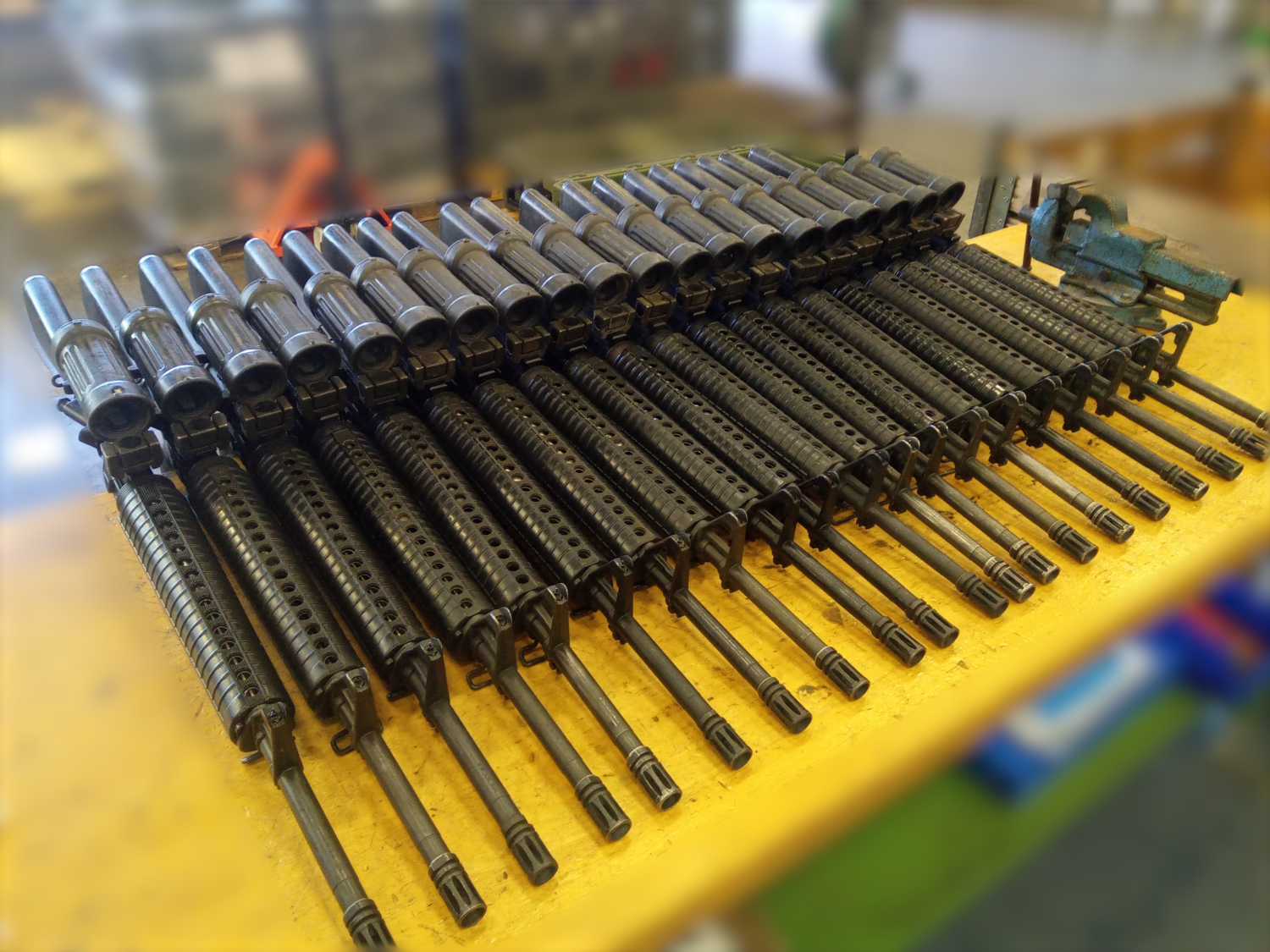
A workbench filled with C7A1 rifles, with ELCAN optics, after being checked by armourers from the Royal Netherlands Army (via source)
We spoke to a source familiar with the Dutch operation to supply the weapons who described the mammoth task of preparing rifles, pistols, optics and light machine guns for transfer to Ukraine.
The primary weapon the team had to get ready for shipment was 5.56x45mm select-fire C7A1 rifles. Made by Diemaco, now Colt Canada, these rifles were made in Canada under a license from Colt. The A1 variant is easily identified by its combination of a handguard similar to that of the US M16A2 and its upper receiver which has a length of Weaver rail for mounting optics. Since the early 2010s, the Netherlands’ C7A1s have been progressively upgraded to the C7NLD standard with new adjustable stocks, railed forends and Integrated Upper Receiver (IUR)s. The remaining C7A1s were placed in storage – many still sporting old paint jobs.
Check out the accompanying TAB video for this article:
Each rifle had its headspacing, barrel alignment, and disconnector and sear checked as well as an overall check for damage or corrosion. On average, if the rifle had no significant defects, the inspection took around five minutes before it was set aside to be prepped for shipment.
So many C7A1s were checked and prepared that the team ran out of the standard C79 ELCAN optics to mount on them, with our source noting that “we used the ELCANs designated for the FN Minimi on the rifles… we also used the ones for the simulator [optics used on electronic indoor training ranges] eventually. We had to remove the front lenses [which allow them to be used on the simulator ranges].”
Once the weapons were checked they were mounted with optics. Collimating these involved setting a 300m zero which our source said “took the longest of all and really trained our arms. Holding the rifle in the air with one arm and adjusting the optics with the other.” After this, they noted that the “tools for inspection and alignment for optics were completely worn out.”
Our source also noted that the Netherlands also transferred a significant number of Gen 3 Glock 17 pistols and some FN Minimi 5.56x45mm light machine guns.
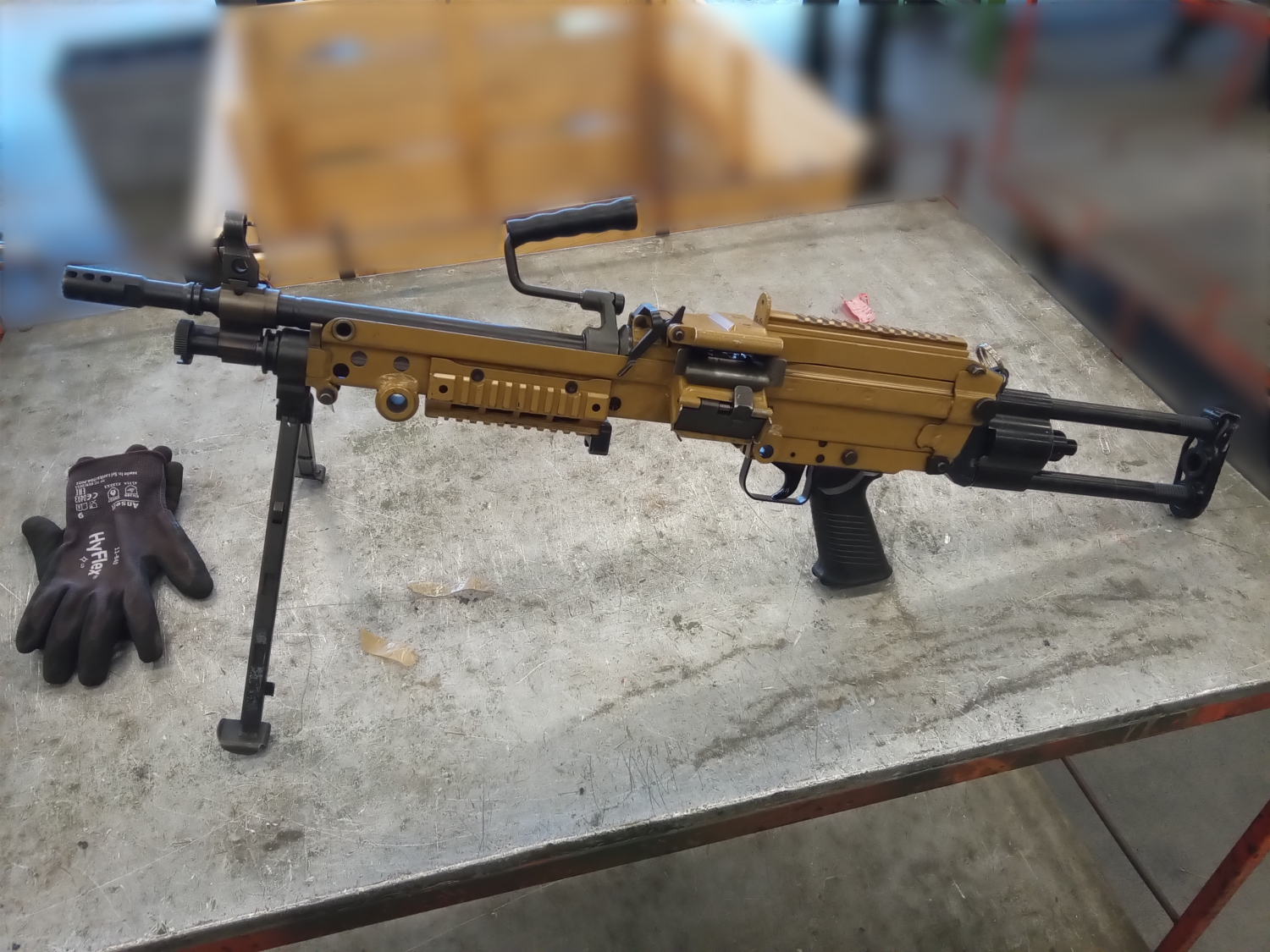
An FN Minimi Para light machine gun, with FDE finish, checked and ready for transfer to Ukraine (via source)
Along with the more numerous C7A1 rifles, a number of the earlier C7 pattern rifles with a carrying handle and a selector with a 3-round burst option rather than fully automatic found on the C7A1s, were also shipped to Ukraine. These earlier C7s are rarely seen in imagery from Ukraine.
Our source explained that when the weapons arrived at the depot for preparation for shipment, “every gun came with one magazine and no optic at first.” But it was decided that rifles needed optics, at first they mounted Aimpoint Comp M3s, then the older 3.4×28 ELCANs, Hi-Mag ELCANs which had originally been mounted on the Dutch Army’s FN Minimis and finally the simulator range ELCANs were used. All of these optics have since been seen in use in Ukraine.
The team of armourers were only allowed to prepare surplus material for shipment so rifles that were damaged – some weapons had corrosion, bent barrels, damaged receivers or furniture – were rejected. Some rifles were cannibalised to repair as many defective weapons as possible but with time short only quick, basic repairs were undertaken.
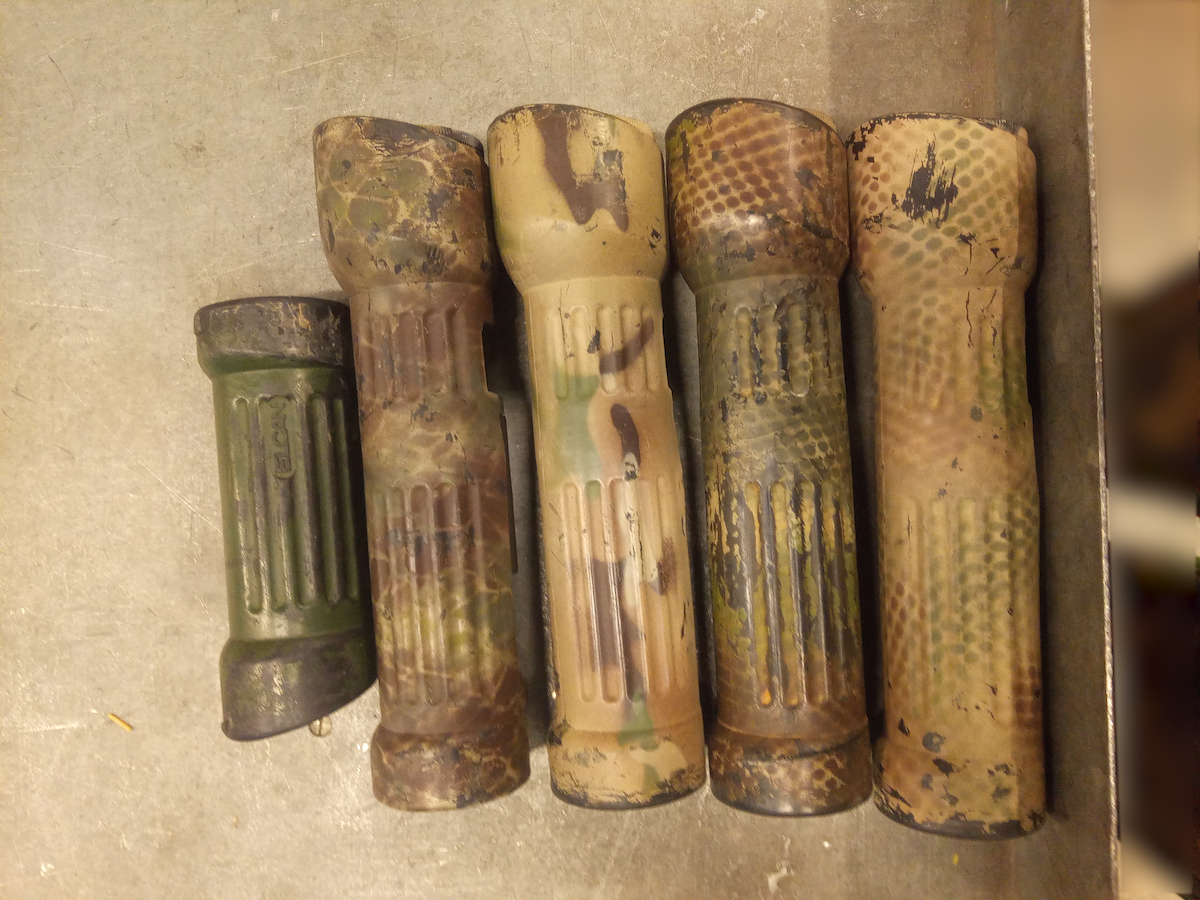
A 3.4×28 ELCAN and Hi-Mag ELCANs originally fitted to machine guns – with their old operational camouflage paint jobs (via source)
The process took weeks of hard work and while our source couldn’t provide an exact number of rifles prepared for transfer he estimated that just under 10,000 were checked, repaired and prepared for shipment.
Since the team completed its work the weapons they prepared have been seen in numerous photographs and videos from the fighting in Ukraine. [As mentioned earlier] The C7A1 rifles have been seen in use with Ukrainian special operations forces, the Ukraine-aligned Belarusian Kalinouski Regiment and most recently with elements of the 47th Separate Mechanised and Azov brigades. The weapons are easily identifiable by their configuration, the characteristic range of ELCAN and Aimpoint optics and also by the small armory identification tags which can often be seen on the right side of the magazine housing.
When asked what he thought of the rifles being used in Ukraine our source said: “I’m glad to see they are being used there. Makes me proud of my work.”
 Your Privacy Choices
Your Privacy Choices
